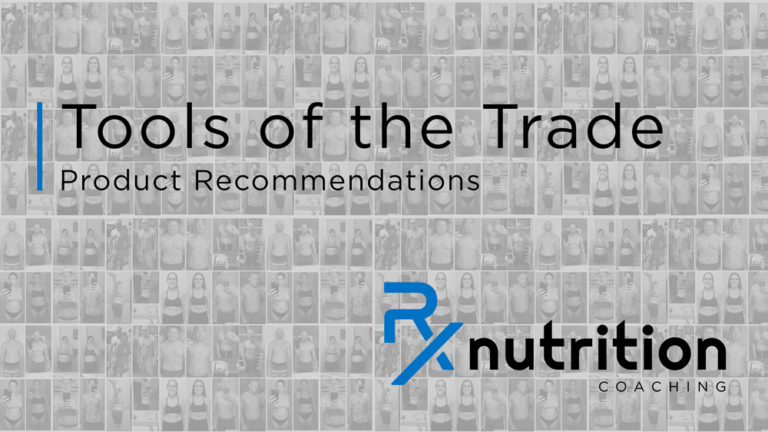So, this crazy nutrition coach has you counting and tracking these things called “macros.”
You’re slowly getting used to it. Foods with labels are pretty simple. You’ve even become something of a pro in your kitchen, using a food scale to weigh your peanut butter and oats.
Two weeks in, you are down some pounds and everything is smooth sailing. But, one Friday after work, everything changes: Your family suggests dinner at a fancy new restaurant.
Uh oh.
You say “yes” because three months of fat-loss programming did not come with a “zero-social-life” upsell. But strictly between you and me, you are pretty nervous right now.
Pizza, lasagna, bread.
Butter, oil, dressing.
Breaded, blacked, grilled, and fried.
Who knows what’s in this stuff?
Three weeks ago, you thought macros were a computer game that Excel nerds played on weekends. Now you’d give anything to know your sweet potato weighs exactly 114 grams.
What are you supposed to do? Live your remaining days in the comfort and sheer boredom of your kitchen? By yourself? Forever?? Never eating out?!
No way, my friend. Let us help you.
Plan A: Google is Your Friend
Some restaurants publish nutrition information online. This should be the first place you look. While it is mainly fast food and chain restaurants that do this, there is a chance the place you are eating keeps nutrition data online.
Now you may be thinking, But are the nutrition facts online really accurate??
Don’t worry about that. It doesn’t matter if the data is 100% accurate – it’s close enough.
Are you getting the exact same amount of grilled chicken every time? No, of course not. 9.13 ounces or 8.85 ounces or 8.99 ounces — it doesn’t matter.
We’re not trying to be perfect – we’re trying to get close. If a restaurant publishes nutrition facts online – unless you have a very good reason not to trust that data – use it.
Plan B: Enter Each Ingredient Individually
Now, let’s pretend you aren’t getting fast food or eating at the Cheesecake Factory. How do you calculate macros for a meal where nutrition information is non-existent?
First things first: Do NOT search for “summer salad” in MyFitnessPal. If you do, you will see over 440 different summer salads (at least – I stopped counting at 440), ranging from two calories (yes, two) up to 900+. And none of them will have the same ingredients as the one in front of you.
What you need to do is look up the nutrition information for each component of your meal.
UGGGGGHHHH! You mean I have to google all five ingredients in my salad?!
Yes. And if you aren’t willing to spend five minutes doing this, stop reading now.
Seriously. We have 24 hours in a day, which means 5 minutes is one-third of 1% of your day. This small amount of time will lead to drastic changes in your health and body and life. You’ve chosen to get on board, so don’t bail out because of a minor inconvenience.
To do this, you need to estimate the portion size of each component. We know you won’t be perfect. Maybe it looks like 1 tbsp of cheese, but it’s actually 1.5 tbsp. So what? Do your best.
From there, look up the nutrition facts for that food or ingredient. I use Google and Nutrition Data as my sources. Then reference that against what you find in MyFitnessPal and use the best entry.
How much will these small errors – like 1T vs 1.5T – impact progress? In the grand scheme of things, it won’t. The choice is yours, and we suggest enjoying a steak from time to time.
Just remember: we want consistency, not perfection.
Tips for Ordering at Restaurants
If you’re brand new to counting macros and logging food, a restaurant can be a scary place. It’s best to plan ahead and estimate the number of macros you have left for dinner. And if you’re new to this process, this is a great idea.
With that out of the way, having some go-to options can help. Assuming you are (1) trying to lose fat, and (2) eating a relatively high protein diet (0.6 – 1g per pound of bodyweight), here are a few ideas for “safe” food choices at restaurants:
• Salad with grilled chicken, shrimp, tuna, or salmon (watch the “extras” in salads like nuts and dressing, as they’re loaded with fat)
• Shrimp cocktail
• Egg white omelet
• Grilled chicken sandwich (again, watch the “extras” and maybe lose some of the bread)
• Fish entree (white fish is a bit leaner than other types of fish)
• Grilled chicken entree
• Pork loin
• Lobster or crab
• Game meat, turkey, or chicken burger
This is not a comprehensive list. We wanted to give you a few ideas of our go-tos.
A good rule of thumb is “everything on its own.” If you can order a lean meat with vegetable sides, you’ll have a better chance of getting close on your numbers. Start mixing components together – like soups or pizza or pasta where everything is all thrown in together – and you’re going to have a harder time.
About Those Pesky “Extras”
Just a quick reminder that the following foods are loaded with either fat or carbs. They have calorie densities that will sneak up and blow your macros wide open:
• Nuts
• Cheese
• Dressing
• Breads/breaded items
• Skin
• Oil/butter
• White/cream sauces
• Avocados/guac (omega 6s, in all their glory, can indeed make you fat)
This is another incomplete list, so continue to be aware of every component in your meal.
What About Spices, Sodium, And Marinades?
Spices and sodium don’t contain calories, so for the purposes of weight gain/weight loss, you don’t need to worry about them.
I wouldn’t worry too much about marinades, either. While there may be a few grams of carbohydrates that cling to your chicken through the grilling process, it won’t be enough to materially impact your progress..
If You Know You’re Going to Indulge Ahead of Time, Plan Your Day
When you know you are going to indulge in an extra drink or two on a given night, plan accordingly. Enter your drinks in MyFitnessPal. Plan ahead by keeping protein high and carbs/fats low during the day.
The same rule applies for dining out. Plan ahead and think about what you might eat that night. Save as many carbs and fat as you can for your meal..
Perfection is the Enemy
I know we’ve mentioned it repeatedly, but it’s worth repeating: Perfection is the enemy. Don’t let your quest for perfection ruin your night out.
If you make an impromptu trip to a restaurant, you cannot know exactly how many grams of protein, carbs, and fats are in your food.
And guess what: It doesn’t matter.
Seeing progress while tracking your macros isn’t about hitting p/c/f perfectly every single day. It is about consistently being pretty close, avoiding blow-up days, and being patient.
If you go 15 grams over on fat, you’re a bit short on protein, you have an extra drink before dinner (because the cute bartender gave you a free drink), and then someone insists that you take a bite of flan even though you hate flan… Don’t freak out. That is negligible toward long-term progress.
It’s one day. Minimize damage. Get back on track the next day.
And enjoy the process!

